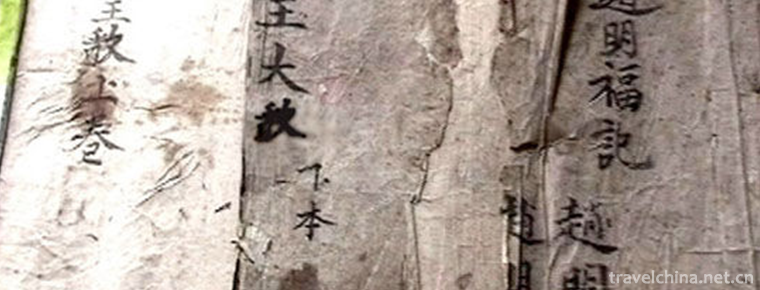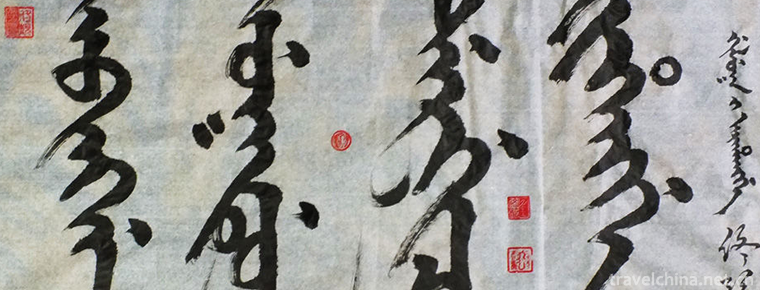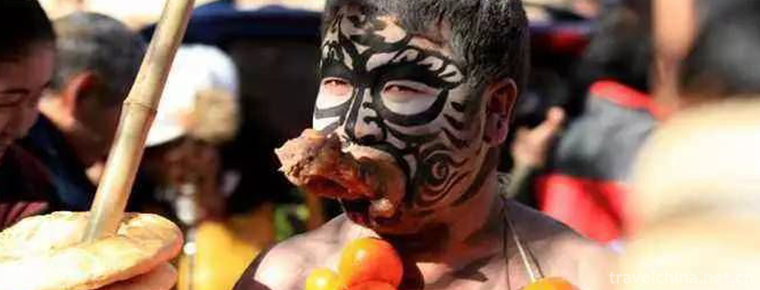2019-05-16

- By ChinaWiki.net
- Chinese Edition
- 2019-06-08
Panwang Song
Panwang Song is a collection of Yao folk poetry. Mainly spread in the residential areas of the Yao nationality in Nanling Mountains, Jianghua is a folk literature with distinct national characteristics. It is the ritual activities of the Yao people to sacrifice Panwang from generation to generation and the creation and production of rich ancient songs and historical songs in their production and life. It began in primitive society, took shape in the Jin Dynasty, formed in the Tang and Song Dynasties, and matured in the late Ming and early Qing Dynasties.
With fantastic imagination and ingenious artistic techniques, it narrates the formation and development of human beings, nations, heaven and earth, as well as the arduous process of the creation of human ancestors. At the same time, they vividly portrayed the images of Fu Xi, Liu Wang, Pan Wang, Tang Wang, Zhu Wang, Warm Wang, Lu Ban, Liu San and Li Guang, profoundly eulogized the heroes and working people who benefited the people and dared to struggle, enthusiastically praised the good and beautiful, and mercilessly criticized the rulers of the fishy people and the cunning and rich people who exploited the people, and loathed the idle and loathsome people. They also made bitter ironies and lashes.
On November 11, 2014, Panwang Dage was listed in the fourth batch of national intangible cultural heritage list with the approval of the State Council.
(An overview of the handwritten copy of Panwang Song discovered in Xiangjiang Township during the Qing Dynasty )
Historical Origin
The Yao people are descendants of Pan Wang. In order to commemorate Pan Wang, the Yao people hold Pan Wang Festival (also known as Pan Gu Wang Festival) every year. The time is uncertain, some in July of the lunar calendar, some in October of the lunar calendar. It is said that when the Yao people crossed the sea during their migration, they met with strong winds and waves and prayed to the King Pan for a safe escape from danger by promising "good wishes of the song hall", and then "returned the King's wishes" from time to time. After "Panwang Festival" and "Return the King's Wish", the Taoist master sings "Panwang Song".
"Panwang Song" is also known as "Panwang Song Book" and "Lou Yue Book Volume II", about 8,000 lines. There were copies very early. The earliest copies found now were in the reign of Qianlong in the Qing Dynasty, but they were mainly handed down orally. There are 36, 24 and 12 versions. The latter two versions are extracts of the former version. Thirty-six verses, including thirty-six songs and seven songs, contain myths, legends, ethnic history and production, life, customs, religion and so on. They are known as the Encyclopedia of Yao people.
The reason why Panwang Song has a huge scale is that people continue to collect all kinds of ballads sung during the "return of the King's Wish" and form a handwritten copy of Panwang Song with various styles and complicated contents.
primary coverage
Panwang Song is a collection of Yao folk poetry. Mainly spread in the Nanling Mountains, where the Yao people live mainly in Jianghua, is the ritual activities of offering sacrifices to Panwang from generation to generation and the creation, production and development of rich ancient songs and historical songs in the production and life of the Yao people. It began in primitive society, took shape in the Jin Dynasty, formed in the Tang and Song Dynasties, and matured in the late Ming and early Qing Dynasties. During the reign of Qianlong in the Qing Dynasty, the earliest manuscript of Panwang Song was found. The manuscript consists of twelve, twenty-four and thirty-six paragraphs, each of which has more than three thousand lines. It is composed of Xu Song, Interlude Song, Zheng Song and Miscellaneous Song. It mainly includes the natural view of Yao ancestors, the theory of human origin, the birth and migration of Yao, the marriage and love of Yao, and the history of Yao's entrepreneurship. It is an "encyclopedia" in Yao society.
Manifestation
"Panwang Song" uses unique parallelism, uses the national language refined from generation to generation, combines the fantastic imagination with the reality of life, reveals the essence and inner feelings of life, and creates an artistic image with magical charm by using the romantic technique originating from life but higher than life. When singing, we use the traditional singing voice of our nation. Men and women are singing in pairs. They are melodious, ups and downs. They have a strong flavor of life and distinct national characteristics.
Inheritance Significance
Panwang Dage is the concentration and reflection of Yao's history and culture. It is the living fossil of Yao's culture research. It is of great significance to enhance the sense of national belonging, inspire national spirit, strengthen national unity, build a harmonious society, enhance national cohesion and sustainable development of Yao's economy and society.
Protection of Cultural Relics
Panwang Song was listed in the fourth batch of national intangible cultural heritage on July 18, 2014.
On May 22, 2018, when literary and artistic workers in Jianghua Yao Autonomous County collected folk cultural materials, Zhao Gengmei, 68, in Tuojiang Town, County Town, saw three handwritten copies of Panwang Song. The earliest one was handwritten in the Qing and Jiaqing Dynasties, more than 200 years ago. This is also the earliest handwritten copy of Panwang Song that can be seen at present. The other two handwritten copies of Panwang Song kept by Zhao Gengmei's family, one in Guangxu Period of Qing Dynasty and the other in Xuantong Period of Qing Dynasty, are all written in block letters with brush strokes, each of which has more than 6000 words.

Ask a Question
Your email address will not be published.



0 Questions